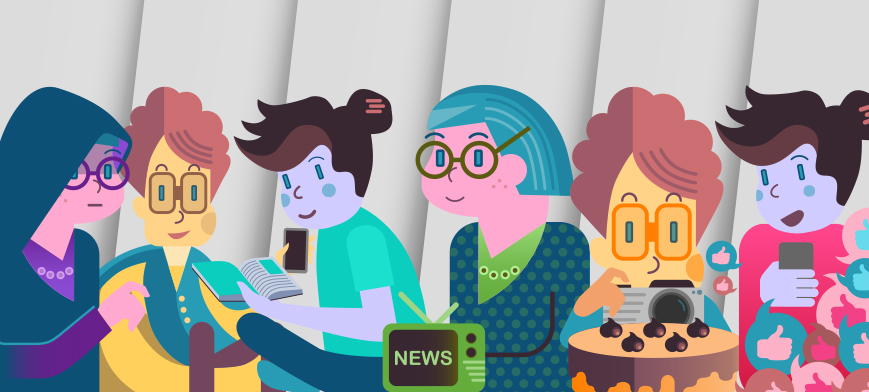For today’s healthcare organizations, understanding customers’ hassles and preferences is mission critical. And with more healthcare interactions occurring in the digital space, understanding customers’ digital concerns and needs is taking on increasing importance.
Yet many healthcare organizations are developing digital strategies with a one-size-fits-all design, and little understanding of how one digital customer varies from the next in terms of their attitudes toward issues like data privacy or being part of an online trend.
Whether it’s booking an appointment, paying a bill, receiving health coaching, or conferring with a provider via a telehealth consult, consumers will bring their own digital DNA to each interaction. Understanding consumers’ digital comfort zones can help healthcare companies better understand their customers and how best to serve them.
To build a framework for companies to understand the nuances of their digital customers, Oliver Wyman recently analyzed survey data from more than 1,500 respondents in its Britain’s Digital DNA research and identified six digital categories – Digital Families. These range from the least digitally savvy to those building and contributing to the web and can be categorized this way:
Laidback Luis (24% of respondents)
Comfortable with the pace of digital change and innovation
Anxious Andersons (19% of respondents)
Concerned about data privacy
Carefree Careys (15% of respondents)
Willing to share data, but seek something in return
Online Owens (15% of respondents)
Live and breathe digital
Contributing Coles (15% of respondents)
Hands-on involvement
Analogue Alis (12% of respondents)
Least digitally savvy
Here, Deborah O’Neill, partner with Oliver Wyman Labs and the Financial Services practice, explains how healthcare companies could use these findings to craft more effective digital strategies.
Laidback Luis
About: Relaxed about the internet and perhaps need a bit of convincing of the value of a new tool or app before they get on board with it.
Implications: The challenge for companies is finding a way to help people in this digital family, as they are happy to operate independent of technology. This family represents an opportunity for businesses looking to move more of their customer online, but a clear vision of how their lives can be made better and more convenient needs to be clearly presented.
Anxious Anderson
About: Despite being digitally empowered, they are extremely concerned about data privacy and so require businesses to win them over with a strong cyber security track record and clear explanations of what information is being recorded and why.
Implications: This digital family will only be willing to interact with companies who share their privacy values and have a strong track record in cyber security. When interacting with the Anxious Andersons, healthcare companies should be extra careful to limit the information they collect to a minimum, and transparently explain what’s being recorded and why it’s needed. They must avoid blurring the line between customer service and marketing. Online payment systems can be more complex, with more approval steps, as this digital family values reassurance of their privacy over convenience.
Carefree Carey
About: Happy to share data in exchange for convenience, good service, and loyalty reward points. Understand and exploit that their personal information works as a currency.
Implications: Digital start-ups that can make everything a little easier or more rewarding can poach this digital family away from traditional businesses that don’t do enough to ensure a seamless end-to-end user experience. High on this families' list is intelligent search function, single log-on, and hassle-free payment. Brand loyalty may not be a priority for this group.
Online Owen
About: Being online is as essential as breathing – they want to be part of a trend and let everyone else know about it. Technology is a huge part of life and viewed overwhelmingly positively. This digital family is forever connected and the first to Like or Tweet
Implications: To create an online experience tailored to this family, businesses must reach out through social media using recommendations and endorsements from trusted sources. The Online Owens want to know they’re part of a trend that touches all aspects of their digital lives and to let everyone else know about it. Add buttons to help them easily share what they’ve been doing – such as what they’ve bought – and get reactions from their digital friends.
Contributing Coles
About: Bloggers, vloggers, coders, and those who build and enrich the internet as much as they inhabit it. It’s not enough to build websites and apps for this family; they need to be involved in the creation and curation processes.
Implications: They want to feel like they’re shaping the story, that they’re the people companies should target to become brand champions, so they’re the people companies should target to become brand champions. Engage them in new product design and beta testing.
Analogue Ali
About: Fond of the internet, but find it and technology complicated and changing at an overwhelming pace. While they are not offline, they are the least advanced of the families. They want to be online but need websites to be simple and to be able to get help from real people if needed.
Implications: Websites need to be simple to navigate with limited tabs, drop-downs, search options, and pop-ups. Relationships can be built by offering clear access to help from real people.
What’s your digital family? Take the survey.


